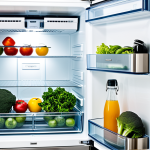Essential Criteria for Choosing Child Safety Pool Alarms in the UK
Selecting the right child safety pool alarms requires understanding key aspects of UK pool safety standards and regulations. Legally, pool alarms in the UK should comply with established safety directives, ensuring the device reliably detects pool entry, especially by children. Meeting these criteria is crucial for both safety and compliance.
When evaluating pool alarm selection criteria, focus on several essential features. First, identify the types of alarms available—surface wave, subsurface, or gate alarms—and assess which suits your pool setup. Sensitivity is critical; the alarm must accurately detect disturbances without frequent false activations. Usability matters too: look for intuitive controls and straightforward installation processes. Durability should not be overlooked, as alarms must withstand the UK’s varied weather conditions and exposure to water.
Have you seen this : The ultimate guide for uk homeowners: discover and repair pool leaks with expert tips
Installation methods vary widely, and compatibility with your specific pool is vital. Some alarms require mounting along the pool edge, while others integrate with pool covers or gates. Verify the installation options align with your pool’s design to ensure effective monitoring. Considering these factors will help you select a child safety pool alarm that offers comprehensive protection while adhering to UK safety expectations.
Comparison of Top-Rated Child Safety Pool Alarms for UK Homes
When searching for the best child safety pool alarms UK offers, independent reviews provide critical insight. Leading models vary by detection technology: surface wave alarms monitor ripples, subsurface alarms sense vibrations, while gate alarms secure pool entrances. Each type has strengths depending on pool design, affecting pool alarm selection criteria.
Also read : Top strategies for protecting your uk home pool during long-term closures
Users consistently praise alarms with high sensitivity that minimise false alerts without compromising safety. For example, some top-rated devices use advanced sensors that accurately detect a child’s entry while ignoring minor disturbances like rain. Ease of use is another common highlight, with intuitive control panels and simple installation methods noted as major advantages.
Price ranges differ widely; premium models often include smart features like mobile notifications and tamper alerts, offering enhanced security for tech-savvy users. However, budget-friendly alarms still provide reliable protection by focusing on core detection and alarm functions.
Pros of leading alarms include robust weatherproofing suited to UK climates, loud and clear alerts, and compatibility with various pool types. Conversely, some alarms may require professional installation or have shorter battery life, important for consumers considering maintenance.
In summary, combining expert pool alarm review insights with real user feedback helps UK homeowners find a child safety pool alarm tailored to their needs and budget.
Essential Criteria for Choosing Child Safety Pool Alarms in the UK
Choosing the right child safety pool alarms involves aligning with strict UK pool safety standards and understanding key pool alarm selection criteria. Legally, alarms must reliably detect pool entries while minimizing false alarms. This ensures child safety and compliance with UK regulations, which often demand sensitive and consistent detection capabilities.
There are several types of child safety pool alarms to consider: surface wave sensors detect movements on the water’s surface, subsurface alarms sense underwater vibrations, and gate alarms monitor pool access points. Selecting the appropriate technology depends on your pool type and usage patterns.
Sensitivity is crucial. Alarms should discern genuine pool entries from benign disturbances like rain or wind. High sensitivity improves safety but may increase false alarms if not well calibrated. Usability affects daily operation; alarms should have intuitive controls and straightforward installation. Durability is equally important, as devices need resistance to the UK’s diverse weather conditions.
Installation methods vary considerably. Some alarms mount along pool edges, others attach to gates or pool covers. Ensuring the alarm is compatible with your pool’s design is essential to maintain continuous monitoring and meet UK pool safety requirements. Assessing these factors systematically refines your pool alarm selection criteria and enhances child safety.
Essential Criteria for Choosing Child Safety Pool Alarms in the UK
Selecting child safety pool alarms demands careful attention to UK pool safety standards, which mandate reliable detection of pool access to prevent accidents. These regulations ensure that alarms maintain a high sensitivity level, balancing efficient detection with minimised false alerts such as those caused by rain or wind.
Key pool alarm selection criteria involve understanding the main alarm types: surface wave sensors react to water disturbances, subsurface alarms detect vibrations beneath the surface, and gate alarms monitor pool entry points. Each type offers distinct advantages depending on your pool’s design and environment, and choosing correctly enhances safety.
Usability remains crucial; alarms should feature user-friendly controls and require minimal maintenance, fitting seamlessly into daily routines. Durability is also essential since these devices must withstand frequent exposure to the UK’s variable climate, including rain and cold temperatures, without compromising function.
Installation compatibility is another pivotal factor. Some alarms mount around the pool perimeter, others integrate with fences or covers. Ensuring the alarm fits your pool’s layout maintains continuous monitoring and complies with UK pool safety regulations. Addressing these aspects carefully elevates your pool alarm selection criteria to secure effective, compliant child safety protection.
Essential Criteria for Choosing Child Safety Pool Alarms in the UK
Understanding UK pool safety standards is fundamental when selecting child safety pool alarms. These regulations require alarms to reliably detect pool access, providing early warnings to prevent drowning incidents. Compliance means the alarm must meet stringent performance benchmarks for sensitivity and durability.
Key pool alarm selection criteria focus on the alarm type, sensitivity, usability, and installation. Surface wave alarms detect disturbances on the water surface, subsurface alarms respond to underwater vibrations, while gate alarms monitor pool access points. Each type suits different pool designs; choosing the right one ensures the system effectively detects potential hazards without frequent false alarms.
Sensitivity settings must balance quick detection with false alert reduction. An alarm too sensitive triggers notifications from harmless events like rainfall, whereas low sensitivity may fail to catch unsupervised pool entries.
Usability involves intuitive controls and minimal upkeep to encourage regular operation. Durability is critical since alarms endure varied UK weather — from wet winters to summer heat — requiring robust waterproofing and weather resistance.
Installation compatibility is vital. Some alarms mount around pool edges, others on gates or covers. Ensuring the alarm matches your pool’s structure ensures seamless monitoring, maintaining compliance with UK pool safety regulations. This thorough assessment of pool alarm selection criteria safeguards effective protection.
Essential Criteria for Choosing Child Safety Pool Alarms in the UK
Meeting UK pool safety standards is the foundation of selecting effective child safety pool alarms. Legally, these alarms must demonstrate consistent, reliable detection of pool access, especially by unsupervised children. This requirement ensures early alerts and reduces drowning risks.
When considering pool alarm selection criteria, the alarm type is paramount. Surface wave alarms detect ripple disturbances on water, subsurface alarms sense underwater vibrations, and gate alarms monitor physical pool access points like gates or doors. The choice depends on your pool’s design and where vulnerabilities exist.
Sensitivity is critical—it balances safety and false alarms. Extremely high sensitivity can cause nuisance alerts triggered by weather like rain or wind, while low sensitivity risks missed detections. Selecting an alarm with adjustable sensitivity helps tailor protection to your environment.
Usability includes simple controls and minimal maintenance to encourage regular use. Durability must address exposure to the UK’s variable climate; alarms should be waterproof, weather-resistant, and maintain function in rain, cold, or heat.
Installation compatibility matters. Alarms that fit your pool’s perimeter, gates, or covers ensure continuous monitoring. Misaligned installation reduces effectiveness and threatens compliance. Evaluating all these pool alarm selection criteria ensures safer pools consistent with UK pool safety regulations.
Essential Criteria for Choosing Child Safety Pool Alarms in the UK
Selecting child safety pool alarms involves strict adherence to UK pool safety standards and understanding precise pool alarm selection criteria. UK regulations require alarms to provide quick, reliable detection of pool access, especially by young children. Compliance means these alarms must balance high sensitivity to detect real threats while reducing false alarms triggered by rain or wind.
Alarm types significantly affect safety. Surface wave alarms sense disturbances on the pool’s surface, subsurface alarms detect vibrations underwater, and gate alarms monitor entry points such as pool gates or doors. Choosing the right type depends on your pool design and potential access points, ensuring comprehensive coverage without gaps.
Beyond type, pool alarm selection criteria stress usability and durability. Alarms should feature intuitive controls with easy adjustment options, allowing users to tailor sensitivity based on environmental conditions. Durability is non-negotiable; devices must resist the UK’s variable climate—rain, frost, or heat—to maintain consistent performance year-round.
Installation compatibility is another pillar. Alarms need to fit the physical structure of your pool, whether mounted on perimeter edges, gates, or pool covers. Proper installation ensures continuous monitoring, preserving compliance with UK pool safety laws and maintaining effective child protection. Meticulous consideration of these factors streamlines finding an alarm tailored for safety and practical use.










